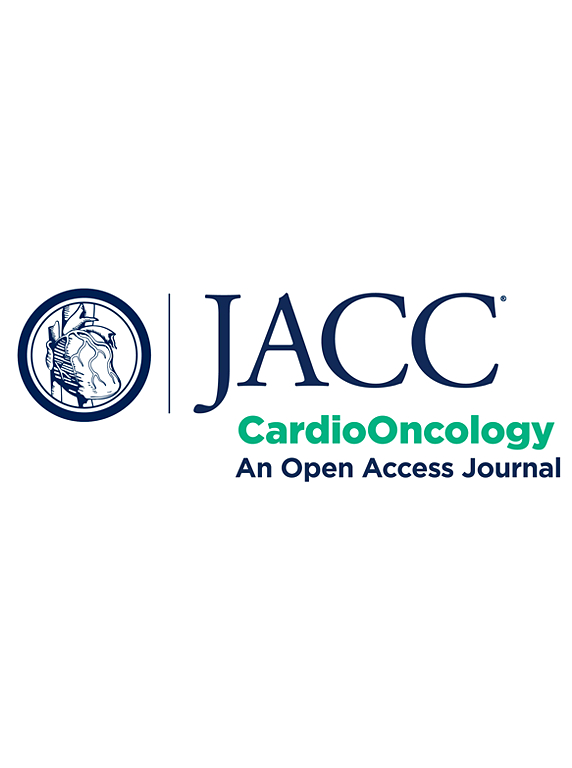Growth Differentiation Factor-15 Predicts Major Bleeding in Cancer Patients
IF 12.8
1区 医学
Q1 CARDIAC & CARDIOVASCULAR SYSTEMS
引用次数: 0
Abstract
Background
The hemostatic system is tightly interconnected with cancer. Research has focused predominantly on thrombotic complications, but less is known about bleeding and bleeding risk prediction. Growth differentiation factor (GDF)-15 has previously emerged as a prognostic biomarker for bleeding.
Objectives
The aim of this study was to investigate the association and predictive ability of GDF-15 for bleeding risk in patients with cancer.
Methods
The CAT-BLED (Vienna Cancer, Thrombosis, and Bleeding) study is a prospective, observational cohort study including cancer patients initiating systemic anticancer therapies. Patients were followed for up to 2 years for thrombotic and bleeding events. The primary outcome was major bleeding. GDF-15 was measured at inclusion and at 3 and 6 months of follow-up.
Results
A total of 779 patients (48% women, median age 62 years, 15% on therapeutic anticoagulation) were included. During a median follow-up period of 18 months, 79 patients (10.1%) experienced major bleeding (12-month cumulative incidence 8.8%; 95% CI: 6.7-10.9). Higher GDF-15 levels were independently associated with increased major bleeding risk (adjusted subdistribution HR per doubling: 1.29; 95% CI: 1.04-1.59), and patients with levels greater than the cohort median (1,864 ng/L) had a significantly higher 12-month cumulative incidence (13.1% vs 4.6%; P < 0.001). This association remained robust in follow-up measurements at 3 and 6 months. GDF-15 showed moderate to good discrimination for predicting 6-month major bleeding risk (C statistic = 0.69; 95% CI: 0.60-0.77). GDF-15 was not associated with venous thromboembolism but was strongly associated with mortality (adjusted HR: 1.37; 95% CI: 1.25-1.50).
Conclusions
GDF-15 levels predict major bleeding risk in cancer patients and are not associated with venous thromboembolism, making GDF-15 a particularly promising biomarker for bleeding risk prediction.
生长分化因子-15预测癌症患者大出血
止血系统与癌症紧密相连。研究主要集中在血栓性并发症,但对出血和出血风险预测知之甚少。生长分化因子(GDF)-15曾作为出血的预后生物标志物出现。目的本研究旨在探讨GDF-15与癌症患者出血风险的相关性和预测能力。方法CAT-BLED(维也纳癌症、血栓和出血)研究是一项前瞻性、观察性队列研究,包括开始全身抗癌治疗的癌症患者。对患者的血栓和出血事件进行了长达2年的随访。主要结局是大出血。GDF-15在纳入和随访3个月和6个月时测量。结果共纳入779例患者,其中女性48%,中位年龄62岁,15%接受治疗性抗凝治疗。在18个月的中位随访期间,79例患者(10.1%)出现大出血(12个月累计发生率8.8%;95% ci: 6.7-10.9)。较高的GDF-15水平与大出血风险增加独立相关(每翻倍调整亚分布HR: 1.29;95% CI: 1.04-1.59),高于队列中位数(1864 ng/L)的患者12个月累积发病率显著升高(13.1% vs 4.6%;P & lt;0.001)。在3个月和6个月的随访测量中,这种关联仍然很强。GDF-15在预测6个月大出血风险方面具有中等到良好的判别性(C统计量= 0.69;95% ci: 0.60-0.77)。GDF-15与静脉血栓栓塞无关,但与死亡率密切相关(调整后HR: 1.37;95% ci: 1.25-1.50)。结论GDF-15水平可预测癌症患者的主要出血风险,且与静脉血栓栓塞无关,因此GDF-15是一种特别有前景的出血风险预测生物标志物。
本文章由计算机程序翻译,如有差异,请以英文原文为准。
求助全文
约1分钟内获得全文
求助全文
来源期刊

Jacc: Cardiooncology
Multiple-
CiteScore
12.50
自引率
6.30%
发文量
106
期刊介绍:
JACC: CardioOncology is a specialized journal that belongs to the esteemed Journal of the American College of Cardiology (JACC) family. Its purpose is to enhance cardiovascular care for cancer patients by publishing high-quality, innovative scientific research and sharing evidence-based knowledge.
The journal aims to revolutionize the field of cardio-oncology and actively involve and educate professionals in both cardiovascular and oncology fields. It covers a wide range of topics including pre-clinical, translational, and clinical research, as well as best practices in cardio-oncology. Key areas of focus include understanding disease mechanisms, utilizing in vitro and in vivo models, exploring novel and traditional therapeutics (across Phase I-IV trials), studying epidemiology, employing precision medicine, and investigating primary and secondary prevention.
Amyloidosis, cardiovascular risk factors, heart failure, and vascular disease are some examples of the disease states that are of particular interest to the journal. However, it welcomes research on other relevant conditions as well.
 求助内容:
求助内容: 应助结果提醒方式:
应助结果提醒方式:


